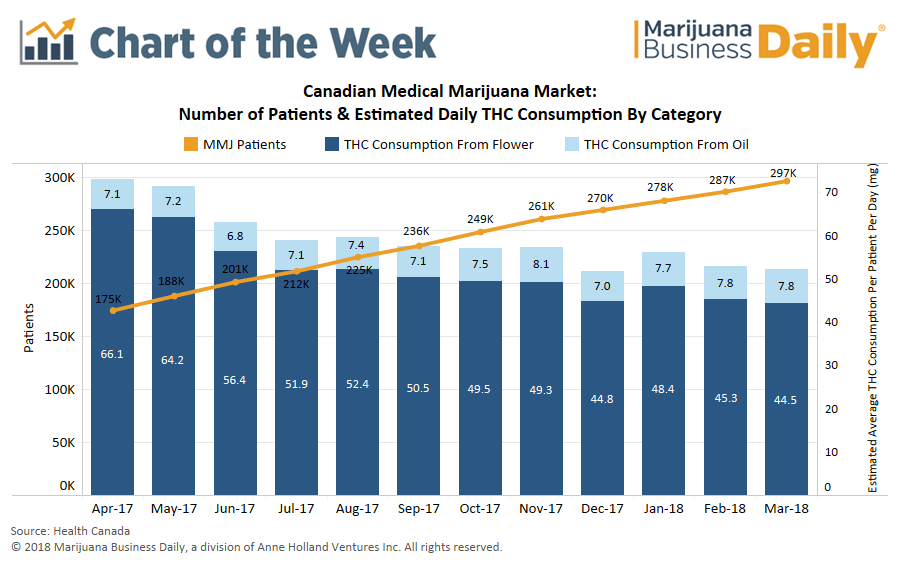The number of medical marijuana patients in Canada skyrocketed in recent months, and patterns of consumption are evolving as the market grows.
The latest data from Health Canada shows patient counts in the country reached nearly 300,000 in March, up from 175,000 in April 2017 – a 70% increase.
Further data from the government – which includes detailed records of MMJ sales from licensed producers to patients – reveals two key findings:
- Consumption on a per-patient basis has declined as more Canadians join the program.
- Sales of cannabis oil are growing, but the market remains dominated by flower.
While individual usage can vary greatly, these results point to broad trends playing out in the market.
Declining per-patient consumption indicates that patient growth is increasing at a faster rate than sales of dry cannabis and cannabis oil, likely driven by newer patients joining the MMJ program and treating less chronic or severe conditions that require lower doses of THC.
These new patients appear to show a preference for cannabis oil, boosting average daily per-patient consumption of oil as they enter the market.
Though flower consumption is on the decline, limitations on potency and product choice for cannabis oils – combined with higher prices – have kept the use of flower as the primary method of ingestion for most MMJ patients.
Unlike many markets in the U.S., Canada limits the amount of THC in cannabis oil to 30 milligrams per milliliter, or 30%.
No high-potency concentrates, such as wax or shatter, or edibles, such as cookies or brownies, are sold in Canada’s MMJ market, though edibles may be allowed next year.
Eli McVey can be reached at elim@mjbizdaily.com





